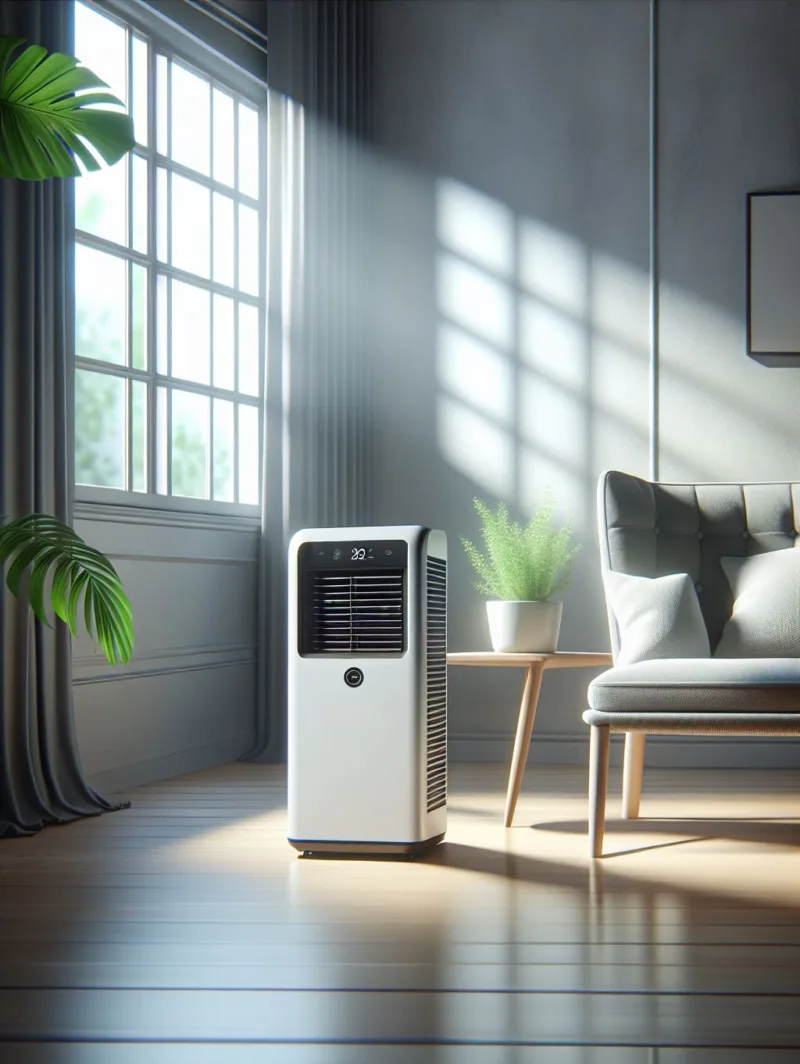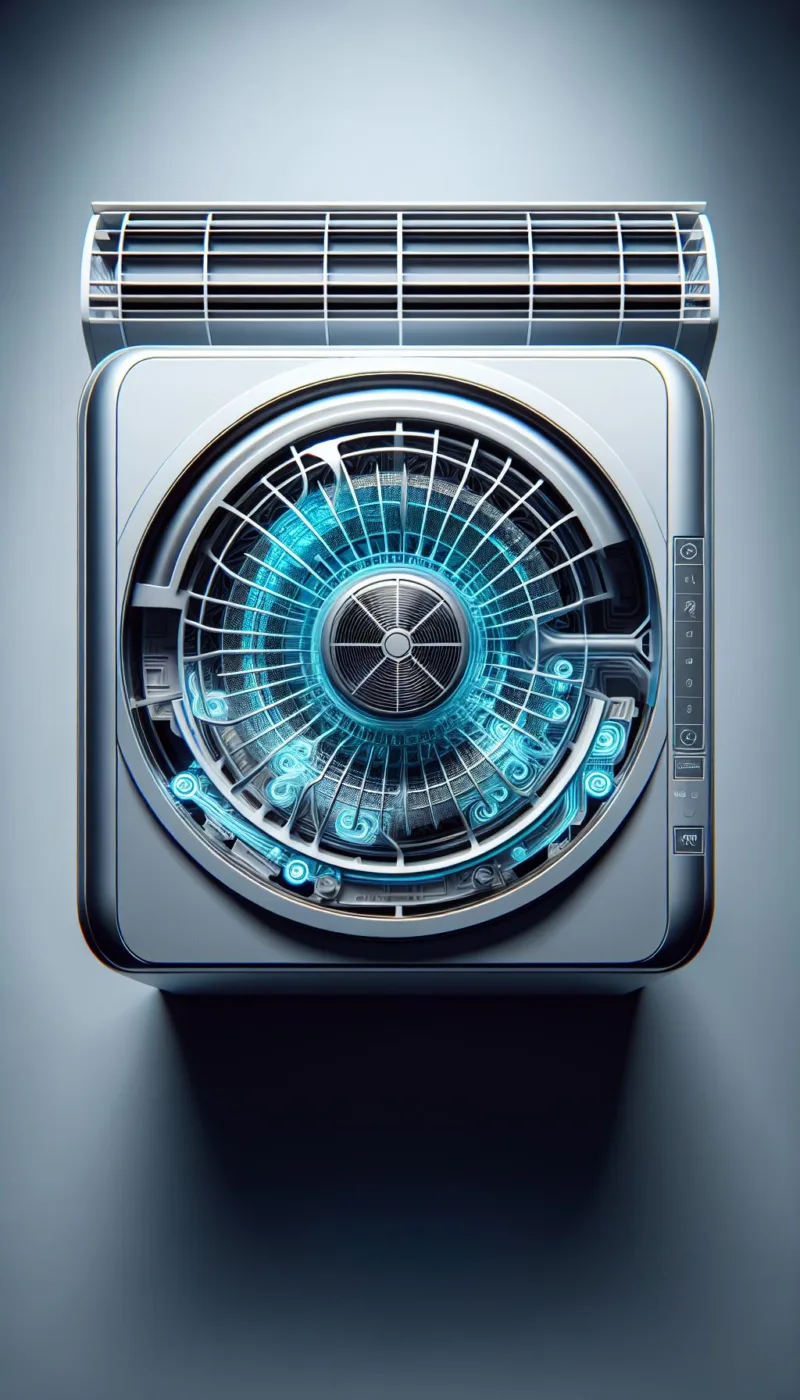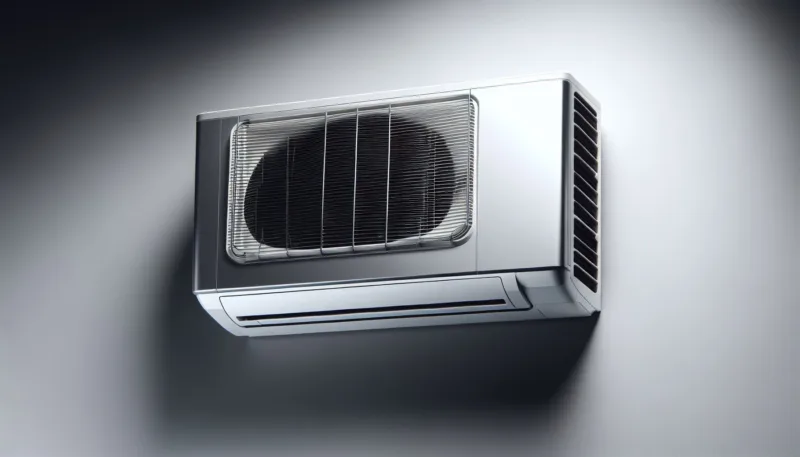Table of ContentsShow
Introduction
Imagine living in a bubble of pristine air, where every breath you take is a gulp of freshness—sounds dreamy, right? Well, that’s the magic woven by the unsung hero of your home: the fresh air intake HVAC. This nifty feature plays a pivotal role in maintaining not just the indoor air quality but also the overall HVAC system efficiency.
Diving into the world of HVAC systems, think of fresh air intake as a strategic gatekeeper. It ensures that your living spaces receive a constant flow of outdoor air to keep things inside from feeling like a stale, sealed-off chamber. Whether you’re nestled on the couch or perfecting that recipe in the kitchen, fresh air intake works quietly behind the scenes to keep your indoor environment healthy and comfortable.
In this article, we’ll peel back the layers on how fresh air intake functions, its undeniable impact on indoor air quality, and why it’s crucial for your HVAC system’s energy efficiency. Not stopping there, we’ll also cover essential tips for keeping this vital component in tip-top shape—because let’s face it, who doesn’t love breathing easy and saving some green at the same time?

Understanding Fresh Air Intake in HVAC Systems
When we talk about fresh air intake HVAC, we’re addressing a critical player in the grand scheme of maintaining a comfortable and healthy indoor environment. Here’s the scoop on what it does and why it’s important:
Definition and Purpose
At its core, fresh air intake is like a breath of fresh air for your home—literally. It’s a pathway designed into an HVAC system that allows outdoor air to flow inside, ensuring the indoor atmosphere doesn’t turn into a stale, uninviting space. Its primary function is to replace indoor air that’s been consumed or contaminated with clean, oxygen-rich outdoor air.
Ventilation System Maestro
Consider the fresh air intake as the conductor of an orchestra, where the musicians are in various rooms in your building. This component orchestrates the movement of air, making sure each section gets enough attention—or in this case, ventilation. This process dilutes accumulated pollutants like carbon dioxide and keeps your indoor air quality on point.
Combustion Process Ally
For homes equipped with fuel-burning furnaces or appliances, fresh air intake isn’t just about comfort—it’s a safety feature. It supplies these units with the oxygen needed for efficient combustion, preventing dangerous backdrafts and ensuring harmful gases like carbon monoxide are sent packing up the chimney or exhaust flue.
HVAC Setup Variations
Not all heroes wear capes, and not all fresh air intakes look alike. The design can vary significantly depending on whether you’re dealing with:
- Forced-air systems: These workhorses push conditioned air throughout your space using blower fans and ductwork.
- Hydronic systems: They use water as their medium, moving heat via pipes to radiators or underfloor systems.
- Other setups: Including ductless mini-splits or localized window units.
Each system integrates fresh air intake in its unique way to match its operation style—whether it’s a direct introduction to the living space or a more complex route through a network of ducts and vents.
By understanding these facets of fresh air intake HVAC systems, you unlock insights into how your own home manages to stay so darn breathable. It’s not magic; it’s meticulous design ensures every breath you take indoors is as refreshing as a stroll through a pine forest (minus the pine needles, of course). Now let’s dive deeper into how this component impacts something we all care about—air quality.

The Significance of Fresh Air Intake for Indoor Air Quality
When the doors close, and the windows shut, indoor air quality (IAQ) takes center stage. Fresh air intake systems play a pivotal role in the grand performance of indoor environment control. They are the unsung backstage crew that ensures every breath taken indoors is as refreshing as a stroll through a pine forest.
Why Fresh Air Intake is Crucial for IAQ:
- Dilutes Stale Indoor Air: The fresh air intake acts like a gentle breeze wafting through your home, sweeping away the stale, stagnant air that accumulates over time.
- Reduces Contaminant Concentration: As fresh air circulates, it dilutes the invisible cocktail of airborne pollutants lurking indoors, reducing their concentration and mitigating potential health risks.
IAQ Pollutants Shown the Door by Proper Ventilation:
- Volatile Organic Compounds (VOCs): These evasive escape artists from paints, cleaning supplies, and building materials are shown the exit when fresh air comes into play.
- Mold Spores: Like unwanted party crashers, mold spores can take a toll on your health. Good ventilation practices ensure these uninvited guests don’t overstay their welcome.
- Carbon Monoxide & Nitrogen Dioxide: These hazardous gases from combustion appliances can accumulate to dangerous levels without proper ventilation.
Filtration: The First Line of Defense:
Filters in fresh air intake vents act as vigilant sentinels, capturing dust, pollen, and other particulate matter before they enter and circulate through the HVAC system.
Imagine each breath you take indoors being sifted through nature’s own filtration system. This isn’t just wishful thinking—it’s what happens when fresh air intake and quality filters work together harmoniously in your HVAC system. By incorporating robust filtration at the point where fresh air enters your home, you can rest assured that the air you’re breathing is not only fresh but also clean.
As you ponder on these mechanisms that keep our indoor atmospheres healthy and inviting, let’s turn our gaze to how this orchestra of airflow affects energy efficiency and system performance in the grand symphony of HVAC operation.

Impact on Energy Efficiency and System Performance
Achieving a balance between fresh air supply and energy conservation is crucial for optimizing HVAC performance. Let’s see how this balance affects the overall system:
How Fresh Air Supply Affects Energy Efficiency
A steady stream of fresh air is necessary to maintain indoor air quality and comfort. However, too much outside air can increase energy demand for heating or cooling, leading to higher utility bills. On the other hand, not enough fresh air can result in poor indoor air quality.
To strike the right balance:
- Ensure sufficient fresh air supply by providing an adequate amount of outside air based on occupancy and ventilation standards.
- Implement smart ventilation systems that adjust ventilation rates based on occupancy and current indoor air quality levels.
The Role of Energy Losses in System Performance
Ventilation must be controlled to prevent unnecessary energy losses. The challenge is to provide enough fresh air for a healthy environment without overworking the HVAC system. Here’s how it can impact performance:
- When fresh air intake is inadequate or becomes obstructed, the HVAC system may work harder than necessary, reducing efficiency and potentially causing issues like short cycling.
- Insufficient fresh air also leads to poor combustion in fuel-burning appliances, posing safety risks.
To minimize energy losses:
- Use demand-controlled ventilation systems that tailor fresh air intake based on real-time demand, ensuring energy efficiency doesn’t suffer.
- Invest in regular maintenance to keep ventilation pathways clean and free from obstructions.
By implementing these strategies and leveraging smart tech solutions for fresh air intake mechanisms, homeowners can optimize their HVAC systems for better efficiency without compromising indoor air quality.
Optimal Location of Fresh Air Intake Openings
Deciding where to position the fresh air intake openings in your HVAC system is a crucial aspect of its design and installation. The location can greatly influence the efficiency, performance, and overall lifespan of your HVAC system. Let’s delve into the specifics of air intake positioning for different types of setups.
On an Air Conditioner Unit
When it comes to residential air conditioning units, there are a few ideal placement options for the fresh air intake. These typically include:
- Adjacent to the evaporator coil
- At the base of the outdoor condenser
The evaporator coil is where heat is drawn out from your home’s interior, so placing an intake near this component ensures that cool, fresh air can be readily supplied to assist in this process. Similarly, positioning an intake at the base of the outdoor condenser – where heat is expelled from your AC unit – allows for efficient ventilation and cooling of this part.
However, every advantage comes with a flip side. A potential disadvantage of these common placements could be increased susceptibility to contamination. For instance, an intake located too close to an exhaust vent or ground-level dust can inadvertently draw in pollutants. This risk underscores why it’s crucial to assess your home’s exterior environment and potential sources of pollution before deciding on a final placement.
In a Home AC Unit with a Ductwork System
For homes equipped with ducted cooling systems, fresh air intakes form an integral part of the return side. These systems often feature strategically positioned return grilles in each room, which serve as entry points for fresh outside air.
This configuration allows for a balanced distribution of fresh air across all rooms. However, care must be taken to ensure proper airflow dynamics within the HVAC system. Too much fresh air drawn into one area can lead to pressure imbalances and reduced system efficiency.
The key to success here lies in carefully planning the distribution of fresh air intakes and carrying out regular assessments to ensure optimal performance. A well-designed ductwork system can help negate risks associated with intake placement, such as drawing in excessively hot or cold air from the attic or outside the home.
In both cases, whether it’s a standalone air conditioner unit or a home AC unit with ductwork, the guiding principle remains the same: Position fresh air intake openings where they can best contribute to system efficiency and indoor air quality while minimizing potential sources of contamination.
Incorporating Fresh Air Intake into Ducted Systems:
1. Strategic Positioning of Return Grilles:
The return side of a ducted AC system is where the magic happens. Fresh air intake typically connects here, with return grilles often installed in each room. These grilles act as gateways for fresh air to enter the HVAC system, ensuring that every corner of your home receives its share of revitalizing outdoor air.
2. Design for Airflow Dynamics:
To keep things breezy and efficient, it’s crucial to place return grilles in locations that encourage even distribution of fresh air throughout the home. This design consideration prevents areas from becoming stagnant or stuffy and promotes a harmonious flow of air across all living spaces.
Balancing Fresh Air Distribution:
1. Uniformity Across Return Openings:
Balancing isn’t just for tightrope walkers. When considering multiple return openings in a ducted system, aim for equilibrium. This balance ensures that each room contributes equally to the overall ventilation process, preventing overwork or underperformance in any part of the system.
2. Proper Positioning Away from Contaminants:
Just as important as location inside the home is placement relative to external factors. Ensuring fresh air intake is away from potential sources of contamination—like exhaust vents or areas prone to dust accumulation—maintains high indoor air quality and protects your health.
By giving thought to the ideal placement and distribution strategy for return grilles in a ducted AC system, homeowners can significantly impact their comfort and system efficiency. Proper positioning in these systems not only bolsters performance but also safeguards against common pitfalls such as uneven cooling and airborne pollutants.
While nailing down the exact spot for these intake points might seem like a game of hide-and-seek, think like Goldilocks: not too close to contaminants, not too far from living areas—just right for seamless integration into your home’s airflow ecosystem.
Maintaining and Ensuring Adequate Fresh Air Intake
Maintaining the fresh air intake system is a vital part of keeping an HVAC unit functioning optimally. Regular maintenance tasks, performed by homeowners, significantly contribute to the overall health and efficiency of the system.
Cleaning or Replacing Filters in Fresh Air Intake Vents
One of the primary responsibilities involves cleaning or replacing filters in fresh air intake vents. The filters play a crucial role in trapping dust, allergens, and other airborne particles that could compromise indoor air quality. Over time, these filters can become clogged, reducing their effectiveness and impeding airflow through the HVAC system. While it’s recommended that homeowners inspect these filters at least once a month, they should replace them every 90 days or sooner if they notice an accumulation of debris.
A handy maintenance tip: Homeowners should consider marking their calendars or setting reminders to ensure timely filter maintenance.
Checking for and Removing Blockages in the Fresh Air Intake Vent
Another important aspect that needs attention is ensuring that the fresh air intake vent is not blocked. Homeowners should regularly check for any obstructions such as leaves, nests, or other debris that may have accumulated around the outside vent. Any blockage can restrict airflow into the HVAC system, reducing its efficiency and potentially leading to more serious issues over time.
Investing in High-Quality Filter Media
In addition to routine cleaning and maintenance tasks, investing in high-quality filter media plays a significant role in maintaining a healthy indoor environment. High-quality filters effectively capture airborne particles without significantly impeding airflow. They are often made from pleated fabric or paper and designed to remove even the smallest pollutants from incoming air.
Although these filters might be more expensive upfront, their ability to improve indoor air quality while maintaining system performance makes them a worthy investment. For instance, HEPA (High Efficiency Particulate Air) filters can remove up to 99.97% of particles as small as 0.3 microns – this includes contaminants like pollen, pet dander, dust mites, and tobacco smoke.
Ensuring an effective and efficiently running filtered intake system is a combination of regular maintenance practices and the use of high-quality components. By following these strategies, homeowners can improve their indoor air quality, reduce energy consumption, and extend the life of their HVAC system.

Conclusion
The heartbeat of a thriving HVAC system is its ability to provide a constant, fresh breath of life into our homes. Fresh air intake HVAC isn’t just a feature; it’s the linchpin in sustaining indoor air quality and energy efficiency. Like a vigilant gatekeeper, it ensures that only the cleanest and most invigorating air circulates through our living spaces.
Regular maintenance isn’t just good practice—it’s a non-negotiable for homeowners who value the sanctity of their indoor environment. Consider these actionable steps:
- Schedule seasonal check-ups for your HVAC system
- Replace filters diligently to prevent airborne particles from staging a coup on your air quality
- Embrace proper design and placement of fresh air intakes to champion energy conservation
By committing to these measures, you not only protect the longevity of your HVAC but also champion a cause far greater: your well-being and that of the planet. Let the fresh air flow freely, and watch as your home transforms into an oasis of health and efficiency.
FAQs(Frequently Asked Questions)
Fresh air intake in HVAC systems refers to the process of bringing in outside air to be used for ventilation and dilution of indoor air pollutants.
Fresh air intake is crucial for indoor air quality as it helps dilute stale indoor air, removes pollutants such as volatile organic compounds (VOCs), and improves overall ventilation and filtration.
Fresh air intake can affect energy efficiency and system performance by balancing the supply of fresh air with energy consumption, preventing unnecessary energy losses, and maintaining optimal ventilation for the HVAC system.
Incorporating fresh air intake into ducted systems involves strategic positioning of return grilles, balancing fresh air distribution across openings, and ensuring adequate maintenance and cleaning of filters and vents.
Homeowners can ensure adequate fresh air intake by regularly maintaining the intake system, cleaning or replacing filters in the vents, checking for and removing blockages, and investing in high-quality filter media.
For homes equipped with fuel-burning furnaces or appliances, fresh air intake is essential for the combustion process to ensure proper ventilation and safety within the home.
Citation
- McDowall, Robert. 2007. Fundamentals of HVAC Systems. Academic Press.
- Nations Best Home Inspections. 2021. ‘HVAC Fresh Air Intake.’ YouTube video, 21:07. https://www.youtube.com/watch?v=34qu5kuELkQ. Accessed January 20, 2024.








